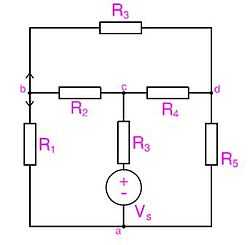Electric Circuit Analysis/Mesh Analysis
< Electric Circuit Analysis
  The Lessons in ELECTRIC CIRCUITS ANALYSIS COURSE |
Lesson Review 5 & 6:What you need to remember from Kirchhoff's Voltage & Current Law .
This part of the course onwards will collaborate with the Mathematics Department extensively. Mathematical Theory will be kept minimal as mathematical tools are only used here as a means to an end. Links to relevant Mathematical theories will be supplied to assit the student. Lesson Review 7:What you need to remember from Nodal analysis. If you ever feel lost, do not be shy to go back to the previous lesson & go through it again. You can learn by repitition.
|
| ||||||||||||||||||||||||||||||||||||||||||||||
Lesson 8: PreviewThis Lesson is about Mesh Analysis. The student/User is expected to understand the following at the end of the lesson.
Part 1: Pre-reading MaterialThe student is advised to read the following resources from the Mathematics department: |
Part 2: Mesh AnalysisLet's start off with some useful definitions:
|
Part 3The following is a general procedure for using Mesh or Loop Analysis method to solve electric circuit problems. The aim of this algorithm is to develop a matrix system from equations found by applying KVL arround Loops or Meshes in an electric circuit. Cramer's rule is then used to solve the unkown Mesh Currents. Once the Mesh Currents are solved, normal circuit analysis methods ( Ohm's law; Voltage and Current Divider principles etc... ) can then be used to find whatever circuit entity. Remember to consult previous lessons if you are not confident in using normal circuit analysis techniques that will be used in this lesson.
1.) Choose a conventional current flow. 2.) Identify and Number loops or meshes. ( Usually 2 or 3 meshes/ loops ) 3.) Apply KVL to identified meshes/loops and formulate ciruit equations. 4.) Create Matrix system from KVL equations obtained. 5.) Solve Matrix for unknown Mesh Currents by using Cramer's rule ( it is simpler although you can still use gaussian method as well ) 6.) Used solved Mesh Currents to solve for the desired circuit entity.
Generally speaking, Mesh Analysis is shorter than Nodal Analysis although not always preffered.Let's try an example to illustrate the above Mesh/Loop analysis algorithm. |
Part 4 : Example
Consider Figure 8.1 with the following Parameters: Find current through
This is the same example we solved in Exercise 7. We can see that there are three closed paths (loops) where we can apply KVL in, Loop 1, 2 and 3 as shown in figure 8.2 We can now apply KVL arround the loops remembering Passive Convention when defining Currents and voltages. KVL arround abca loop:
Therefore
|
Part 5 : Example (Continued)KVL arround acda loop: Therefore
Therefore
Now we can create a matrix with the above equations as follows: |
Part 6 : Example (Continued)The following matrix is the above with values substituted:
Solving determinants of:
As follows: |
Part 7: Example (Continued) |
Part 8: Example (Continued)Now we can use the solved determinants to arrive at solutions for Mesh Currents 1. 2. 3.
The answer is as we expected it to be, |
Part 9: Exercise 8
Consider Figure 8.3 with the following Parameters: Find current through |
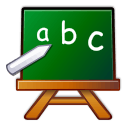 Part 10:Further Reading Links: Refferences:
Completion ListOnce you finish your Exercises you can post your score here!
To post your score just e-mail your course co-ordinator your name and score *Click Here
|
| |
|
|
|
|
| | Resource type: this resource contains a lecture or lecture notes. |
| | Action required: please create Category:Electric Circuit Analysis/Lectures and add it to Category:Lectures. |
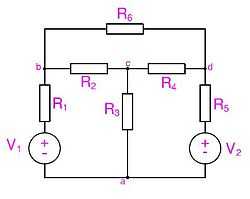








 using Mesh Analysis method.
using Mesh Analysis method.
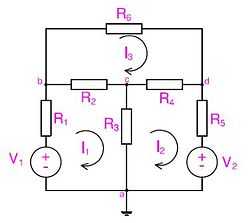

 ............(1)
............(1)
 ............... (2)
............... (2)
 ............... (3)
............... (3)
 ?
? 
 .
.

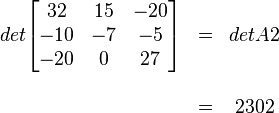
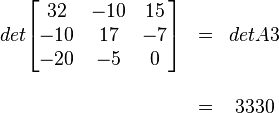
 as follows:
as follows:



 flows in the direction of
flows in the direction of  . As expected, mesh analysis and nodal analysis gave equivalent answers.
. As expected, mesh analysis and nodal analysis gave equivalent answers.